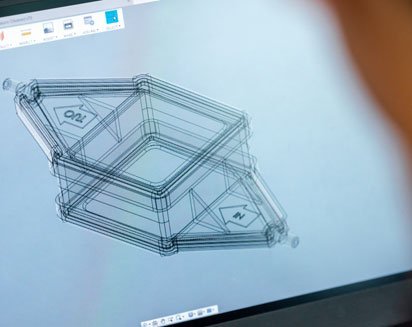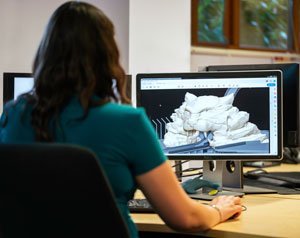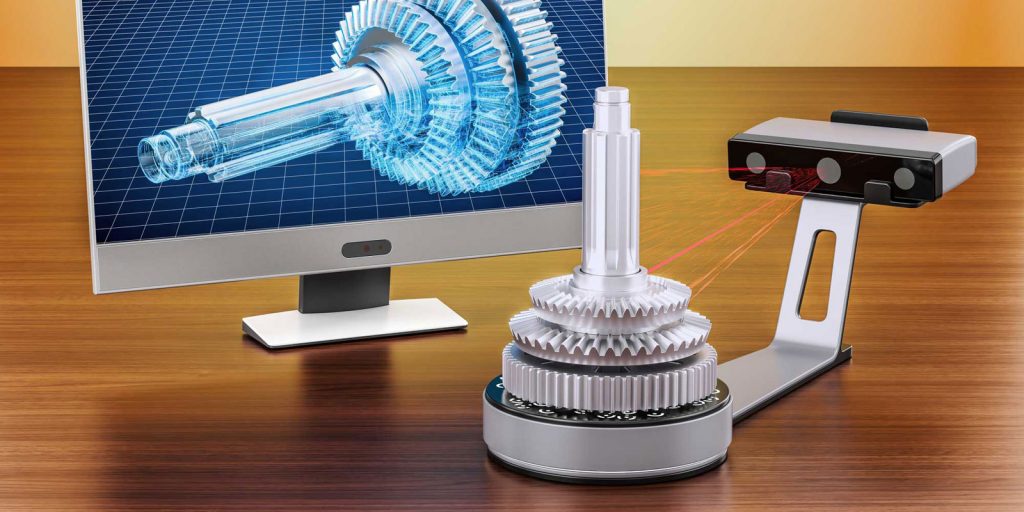You may wonder what is 3D scanning used for? 3d scanning is used for a multitude of different applications. 3D scanning is now more popular than ever. Businesses across the globe use 3D scanners. Its a game-changer for many companies. 3D scanners are improving productivity and improving workflows. They are disrupting markets across the globe. 3D scanning is a fascinating development in the 3D technology world.
In this article, we will look at the basics of 3D scanning and how different industries have adopted 3D scanning into their workflow. You will be amazed at the results people have achieved. It may open your mind to possible solutions for your business.
Before we get to carried away, let’s go over a few points about 3D scanning.
What is a 3D scan?
A 3D scan is a virtual map of a model or part. It transfers the data into a point cloud or a mesh —the point cloud/mesh comprises of thousands of triangles or polygons. These shapes form a 3D map of the scanned item. No matter how intricate the part, every detail can be captured. 3D scan data opens up a world of possibilities.
What is 3D scanning?
3D scanning is a method of analyzing a real-world object. The scanner collects data, capturing the shape and size of the item, by taking multiple photographs of the item. It stitches the pictures together. Once the scan is complete, you have a 3D model of your part. It can be turned around and viewed at every angle.
What does a 3D scanner do?
A 3D scanner is similar to a camera. It captures the data point of objects within its view. It uses a structured light beam, and a camera to collect the data. It calculates how much the structured light beam deforms over the object. This data is what creates the scanned model.
How do you use a 3D scanner?
That depends on what you are scanning. Smaller items are best suited to a table-top scanner. Table-top scanners have a turntable and two cameras on either side of the turntable.
If your item is taller than 200mm, say a car bumper for instance. Then you would need a mobile scanner. A mobile scanner is ideal for parts that are in situ and cannot move. They would scan the entire object using data points. It’s a very accurate and speedy way to collect data.
What is 3D scanning used for?
3D scanning data is used for a multitude of reasons. If you want to 3D print an object and you don’t have a 3D model, you will need to scan the item. To reverse engineer a product, you will need a 3D scan of the object. To design a mating part, its so helpful to have the exact measurements of the original piece. Using 3D scanning technology makes this process much easier. It cuts down the number of revisions and improves the workflow. Saving businesses time and of course, money!
3D Scanning And Architecture
Architects need models of buildings and structures for several reasons, such as restoration or documentation. There are only two ways to collect this data – measure the building or 3D scan the building. As you can imagine 3D scanning, the building is a lot faster and more accurate. Can you imagine trying to measure every inch of an entire building?
3D scan data can be beneficial in the restoration process. You can see the exact condition of the building and what exactly needs repairing. If you have the right technology, there is no limit to what size building you can scan.
Art, History And 3D Scanning
3D scanning and 3D printing are becoming increasingly important in cultural preservation. 3D technologies gives historians, archaeologists and museum curators the power to capture 3D versions of ancient objects or artefacts.
A 3D scanner captures more data than the human eye or traditional 2D pictures. When replicating historical objects, a 3D scan is required. The data generated can then be used to 3D print a replica of the piece. Here you can see the British Museum has a whole collection of 3D scanned ancient artefacts. You can even download a 3D model and print your very own ancient artefact!
Product Design And 3D Scanning
3D scanning technology has made transitioning from a physical object to a digital model simple. It is allowing designers to create complex and sophisticated designs. Now that we can digitally capture the human form in intricate detail, we can transfer that information into wearable technologies, such as prosthetic limbs or bespoke jewellery.

It helps designers with aftermarket parts. If you need to design something to fit an existing product, it becomes much easier when you have a 3D model of the original piece. 3D scanning vastly reduces the amount of product revisions. Parts have a much greater chance of fitting first time!
It is also becoming more popular for retailers to use 3D models of products to sell goods online. If you can supply a 3D model of your design, it could help to generate sales of the item.
Education And 3D Scanning
3D scanning is becoming an integral part of STEM learning in schools, bridging the gap between theoretical and practical knowledge. Student’s can create a physical prototype of an invention or design. They can then scan it and improve on the design. The design can be 3D printed. This type of learning is far more engaging than studying theories in textbooks. It brings the design process to life.
The Medical Industry And 3D Scanning
3D scanning provides a detailed image of the inside of a patients body. 3D Scans can be done quickly without touching the patient. Another positive point is that 3D technology is not harmful, unlike X-rays or MRIs, so it’s much better for the patient. No other technology has given doctors this much information about their patients this quickly.

Did you know that body parts can be reconstructed? If a patient loses a part of their bone to cancer, a reconstructed piece of bone is created using 3D scan data, and 3D printed to fit their body perfectly. 3D scanning is changing peoples lives for the better! Here is a video from the BBC about a facial reconstruction clinic that has opened in the UK.
Forensic Science And 3D Scanning
Staying one step ahead of criminals is a constant challenge for detectives and forensic scientists. 3D scanning is providing vital evidence in murder cases. Post mortems have long been providing vital clues in the cause of death. However, 3D scanners can collect far more detailed information than traditional methods. They can even detect the smallest injuries that could never be detected by the human eye.
Reverse Engineering and 3D scanning

3D scanners are useful in engineering, manufacturing and industrial design. 3D scanning replaced the need to use manual measuring methods. These are both time consuming and inaccurate in comparison to a highly detailed 3D scan. In turn, this is costly and time-consuming. 3D scanning has made huge changes to the engineers workflow. Engineers can now have much more confidence in the accuracy of the scans and therefore avoiding costly mistakes.
Full-Body 3D Scanning
3D full-body scanners where initially developed for the fashion industry. However, they are now popular in the health and fitness industry. Within minutes a person can be accurately scanned from head to toe. This data is used to provide measurements and indicate changes in body size and shape. They are unlocking a whole new use for 3D scanning technology! How long will it be before we all get 3D scanned when we go to the gym?
Virtual Reality, Animation And 3D Scanning
We have all watched movies with a sense of awe. How did they make that look so real? There is no denying the movie industry has upped its game when it comes to special effects. Most Hollywood blockbuster films use 3D technologies. It much easier to 3D scan and 3D print a scaled model of an item than to create it in a physical form. Who would have thought Iron Mans chest piece was 3D scanned and 3D printed!
What’s next for 3D scanning?
Now you know what is 3D Scanning is used for. These are just a few ways that 3D technologies are changing the world around us. You may not notice these things in everyday life, but they are there.
Ten years ago 3D scanning was a new unaccessible technology. Now is used by all industries across the globe. Who knows what will happen over the next ten years? At Surface Scan, we cannot wait to find out.
We love everything, 3D. 3D scanning improves workflows for many businesses and creatives. If you think it could help you, then please contact us for more information on our 3D scanning services.
For more info on our 3D scanning services take a look here;

